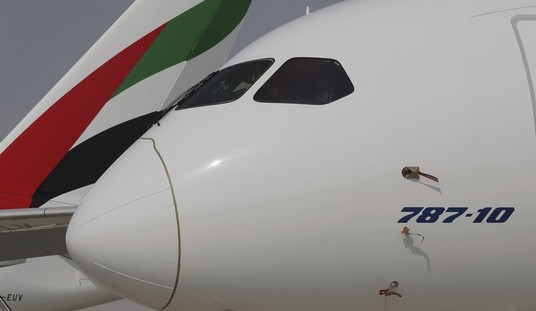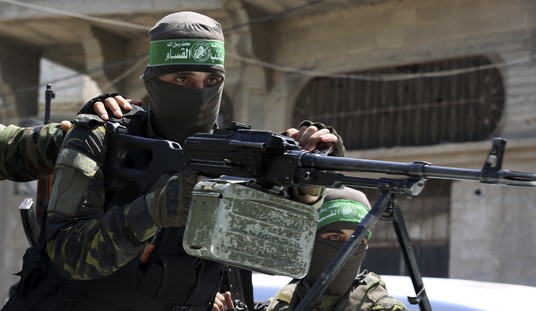 Like the tolling of a deadly clock, yet another missile struck al-Qaeda in the Pakistani border area. “One of al Qaeda’s top chemical and biological weapons experts was killed in an air strike by a CIA pilotless drone,” according to CBS News. Abu Khabab Al-Masri is dead, according to al-Qaeda website. Several other men were killed in the strike. However, al-Masri’s name has still not officially been taken down from the Rewards for Justice website. The US had not officially confirmed his death as of this posting.
Like the tolling of a deadly clock, yet another missile struck al-Qaeda in the Pakistani border area. “One of al Qaeda’s top chemical and biological weapons experts was killed in an air strike by a CIA pilotless drone,” according to CBS News. Abu Khabab Al-Masri is dead, according to al-Qaeda website. Several other men were killed in the strike. However, al-Masri’s name has still not officially been taken down from the Rewards for Justice website. The US had not officially confirmed his death as of this posting.
While the title of “top chemical and biological weapons expert” may evoke images of Dr. Evil-style laboratories, the more prosaic description of al-Masri would be “bombmaker”. The LA Times says al-Masri was behind the failed post-September 11 plot to blow up airplanes en route from Britain to the United States, an event now memoralized in the restrictions on passenger-embarked bottles of fluids.
The innovative techniques required special instruction. Masri envisioned his operatives injecting the liquid explosives, a highly concentrated hydrogen peroxide mix, with a syringe into the false bottoms of innocuous containers such as sports drinks, sneaking the components aboard and assembling bombs after takeoff.
The Associated Press also credits al-Masri with training the suicide bombers who attacked the USS Cole. He preferred to be the mentor, often through a training staff who acted as cutouts. The LA Times sources believed that counterterrorism had chopped off al-Masri’s tentacles and ground down his networks. With the decimation of his henchmen, the master bomber was forced to venture out himself and train volunteers who were often of indifferent quality.
Masri assumed more control. … Last spring, he taught bomb-making in compounds in North Waziristan to aspiring suicide attackers, including a 21-year-old Pakistani living in Denmark and a 45-year-old Pakistani-German, according to U.S. and European officials. U.S. anti-terrorism source sees Masri’s role as a symptom of decline. “The fact he trained them himself shows you some of the limitations of the network,” the source said.
In any case, Masri’s pupils apparently displayed more fervor than stealth. Aided by U.S. intercepts of communications to Pakistan, Danish police put the 21-year-old under surveillance along with his associates, one of whom had been in Pakistan at the same time. As in London, police got deep inside the alleged cell, U.S. and European officials say. … Masri’s ongoing contact with foreign operatives put him in the cross hairs. U.S. forces have unleashed a flurry of airstrikes in Waziristan this year, killing a top Libyan chief, Abu Laith al Libi, and other Arab militants in late January.
Bill Roggio points out that the airstrike which may have killed al-Masri was just one in a series of strikes within Pakistan aimed at dismantling al-Qaeda’s infrastructure. While the line on the map between Pakistan and Afghanistan may be impermeable to uniformed soldiers it is porous to information. And information crossing the border, once tied to missle-carrying UAVs, is lethal, often within minutes. Abu Khabab al Masri
is the third senior al Qaeda leader to have perished in Pakistan’s lawless tribal regions.
On May 14, Abu Sulayman Jazairi, a senior Algerian operative for al Qaeda’s central organization who directed the groups external operations, was killed in an airstrike against a Taliban and al Qaeda safe house in the town of Damadola in Pakistan’s Bajaur tribal agency along with 13 associates. Jazairi is described as a senior trainer, an explosives expert, and an operational commander tasked with planning attacks on the West.
Abu Laith al Libi was killed in a US strike inside the North Waziristan tribal agency in Pakistan in late January. Al Libi was the leader of the Libyan Islamic Fighting Group and served as a chief spokesman for al Qaeda. Laith also commanded al Qaeda forces in Afghanistan.
The US military has carried out at least three other strikes against al Qaeda and Taliban targets in the tribal areas this year. These hits include a strike that targeted Baitullah Mehsud in his hometown of Makeen on June 14, an attack on a compound run by Siraj Haqqani on March 16, and the bombing of a fortified compound owned by Noorullah Wazir on March 12.
The detail and near real time nature of the information which coalition forces now have on al-Qaeda cells inside Pakistan was illustrated by a Long War Journal correspondent’s report on the strike on the Haqqani Network in North Waziristan.
I watched them pass on taking out some bad guys because they were in a compound with other people and there might also be collateral damage to the surrounding structures, possibly causing civilian deaths or injuries,” Phil recounted in an e-mail from Bagram Air Force Base. “The intel was solid; they knew who the guys were and where exactly they were in the compound but they passed to get them another time.”
The lethality of information may eventually modify the role of the traditional armies from that of being the primary delivery mechanism of force to that of protecting the gatherers of information. One reason why ground forces will remain vital into the 21st century is that they alone are capable of providing security for people. In a counterinsurgency campaign where the population itself becomes the primary source of “tips”, protecting the people protects the fountainheads of information. Once the information is in hand, the lethal force can follow, often within seconds. This probably one reason why the Surge worked. The security provided by US forces and new Iraqi units yielded vast information dividends. And information is fatal to al-Qaeda.
Perhaps it is fallacious to believe that intelligence operations and diplomacy can be neatly separated from military activity in the age of terrorism. Intelligence work and diplomacy — even law enforcement — cannot long survive without security. It will be interesting to watch how the US conducts its virtual maneuvers in Pakistan; it’s tenuous net of informers, signals intelligence and high-tech strike assets forming an invisible force against the phantoms of al-Qaeda. It’s a battle of the ghosts on the roof of the world.









Join the conversation as a VIP Member